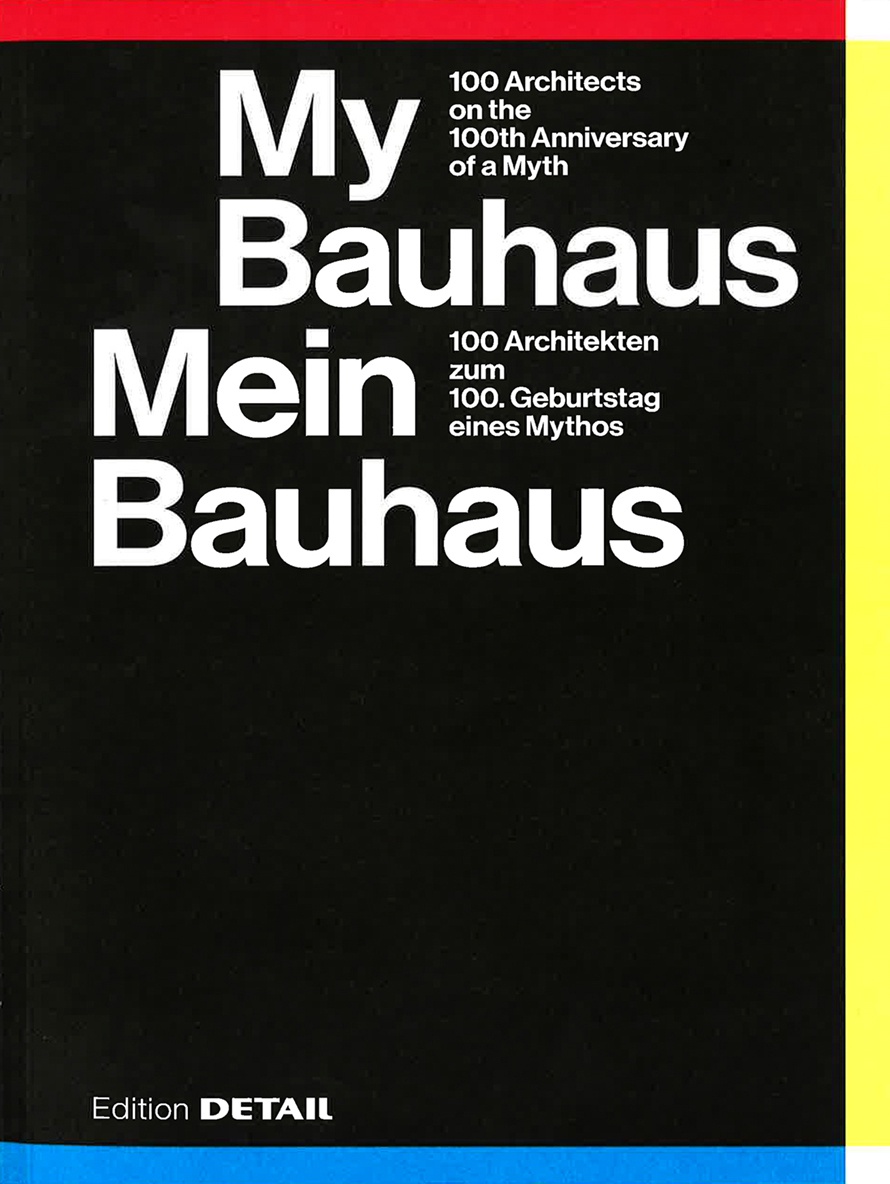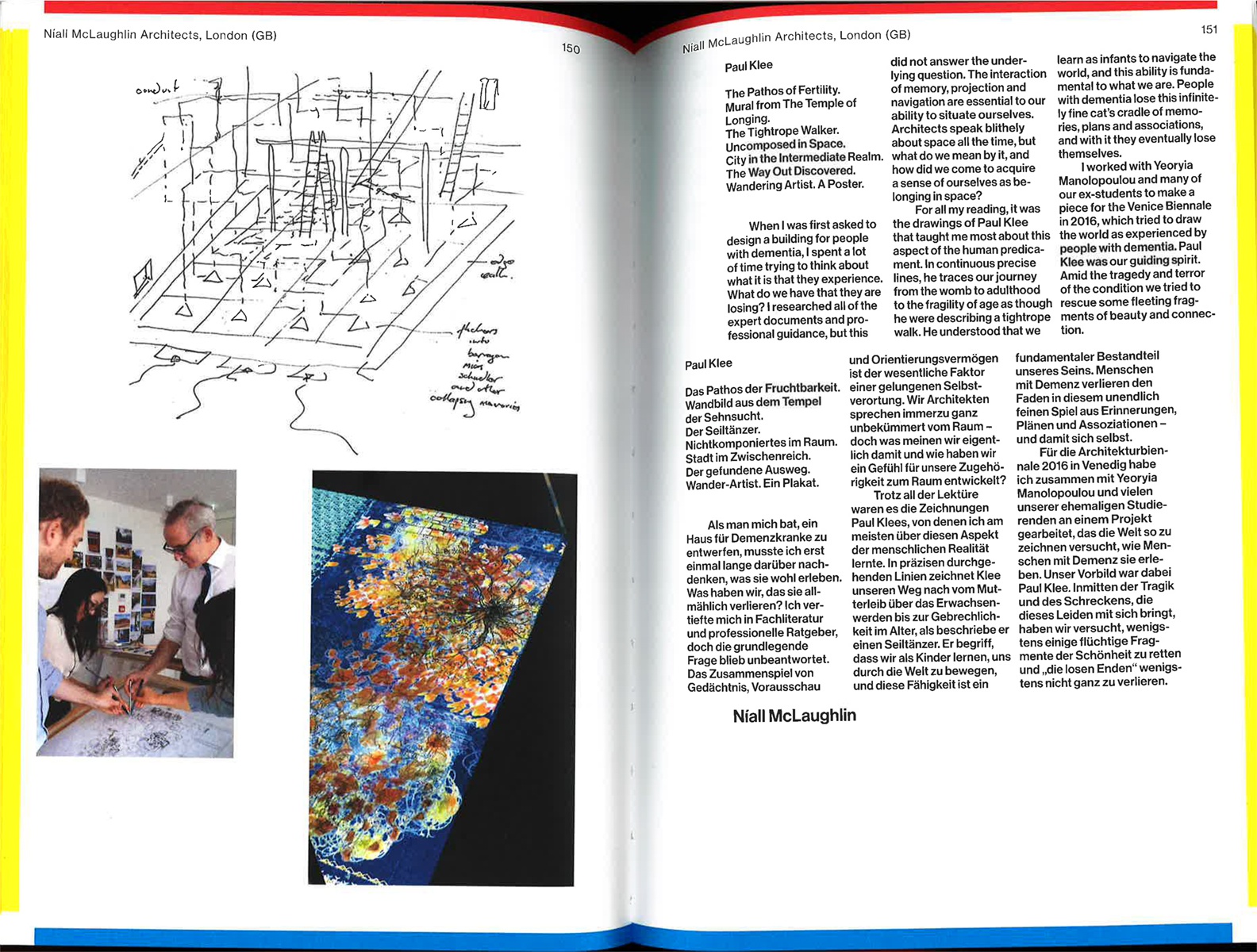My Bauhaus - 100 Architects on the 100th Anniversary of a Myth
Published by Detail 2018
Edited by Sandra Hofmeister
ESSAY by Niall Mclaughlin
When I was first asked to design a building for people with dementia, I spent a lot of time trying to think about what it is that they experience. What do we have that they are losing? I researched all of the expert documents and professional guidance, but this did not answer the underlying question. The interaction of memory, projection and navigation are essential to our ability to situate ourselves. Architects speak blithely about space all the time, but what do we mean by it, and how did we come to acquire a sense of ourselves as belonging in space?
For all my reading, it was the drawings of Paul Klee that taught me most about this aspect of the human predicament. In continuous precise lines, he traces our journey from the womb to adulthood to the fragility of age as though he were describing a tightrope walk. He understood that we learn as infants to navigate the world, and this ability is fundamental to what we are. People with dementia lose this infinitely fine cat ‘s cradle of memories, plans and associations, and with it they eventually lose themselves.
I worked with Yeoryia Manolopoulou and many of our ex-students to make a piece for the Venice Biennale in 2016, which tried to draw the world as experienced by people with dementia. Paul Klee was our guiding spirit. Amid the tragedy and terror of the condition we tried to rescue some fleeting fragments of beauty and connection.
Download My Bauhaus extract in Pdf

